#alvarezsaur
Explore tagged Tumblr posts
Text
#Paleostream 19/10/2024
here's today's #Paleostream flocking sketches!!! i missed the live today because doing that stream right before took me out and i had to sleep :P
today we sketched Lambeosaurus, Microraptor, Innovatiocaris, and Haplocheirus




#Paleostream#paleoart#digital art#paleontology#digital artwork#artists on tumblr#palaeoart#digital illustration#sciart#id in alt text#paleoblr#palaeoblr#dinosaur#ornithopod#hadrosaur#lambeosaurus#theropod#bird#dromaeosaur#microraptorine#microraptor#piebald#invertebrate#prehistoric invertebrate#invertebrate art#radiodont#innovatiocaris#alvarezsaur#haplocheirus#disease
120 notes
·
View notes
Text
Spectember 2023 #01: Kiwi Alvarezsaur
It's #Spectember time again!
I'm still trying to work through that big pile of speculative evolution concepts from a few years ago, so I'm hoping to make this month sort of a "lightning round" to finally clear out the backlog.
(I'm not going to set a definite posting schedule this year because things are pretty chaotic right now. But I'll try to fit in as many as I can!)
So let's start off with a concept from an anonymous submitter, who requested a "kiwi/sengi niche alverezsaur":

Khamartaia dolabella is similar in size and build to Shuvuuia, about 1m in length (3'3"), with slender legs and stumpy arms with massive thumb claws. Unlike its close relatives, however, it has small eyes and fairly poor vision, relying more on its other senses to forage around during the darkness of night.
It has an acute sense of smell, and its long narrow snout is full of highly touch-sensitive nerves, allowing it to probe around for invertebrate prey in soil, undergrowth, and cracks and crevices. Its chunky thumb claws are used to dig up burrows and to tear through bark to access deeper insect nests.
It mainly relies on its long legs to sprint away from threats, although with its poor eyesight these escapes are often rather ungainly.
310 notes
·
View notes
Text

If you're in need of free seratonin, here's a baby alvarezsaur :)
#dinosaur#alvarezsaur#shuvuuia#mononykus#maniraptora#cute#cute dinosaur#cute animals#baby dinosaurs#i didnt know what species to make it :(#free serotonin#paleoart
8 notes
·
View notes
Note
Trick or Treat!

Patagonykus!
35 notes
·
View notes
Text

sketchpainting for a Hatzeg forest floor scene?
#paleoart#paleoblr#dinosaurs#hatzegopteryx#i dont remember the genus of dino here it was some scrappy theropod (maybe alvarezsaur) that i got frm my gf's random dino generator#procreate#digital art
248 notes
·
View notes
Note
hi! whats a fossil creature youd like to ramble about? i love paleontology and fossils and the history of life and would love to learn more ^w^ hope you have a good day!
you have opened the floodgates.
SO. i shall be talking about alvarezsauroids, a (relatively) newer and highly underrated group of dinosaurs (in my humble opinion). i want you to imagine an ornithomimid, but make it about the size of a turkey, and give it only one big claw on each hand. that's your average alvarezsaur!

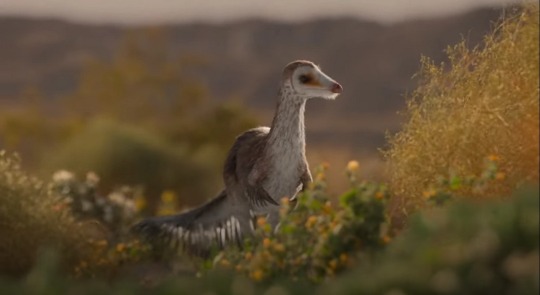
these little guys were basically the anteaters of the mesozoic (though as they were around before any insects started living in colonies, they probably didn't eat just ants). their little arms were quite muscular, and that, combined with their stiffened spine, lever-like arm bones, and big claws meant that they were probably quite good at digging into hard things that bugs like to live in, such as dead wood, or hard dirt.
now, you may be thinking, "but how could they possibly survive off of such little food when there are no eusocial insects?" the answer to that is actually really cool!
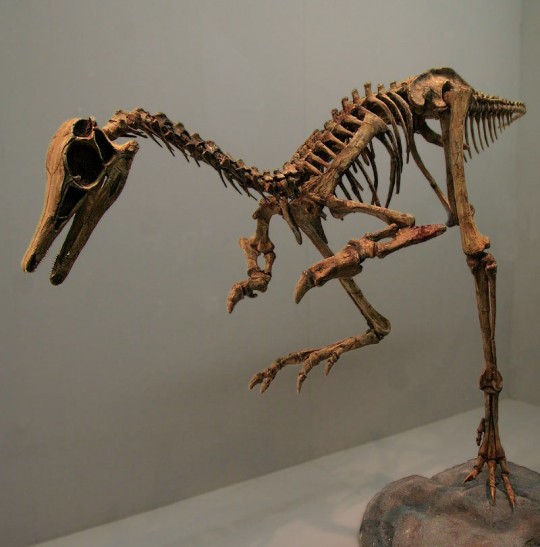
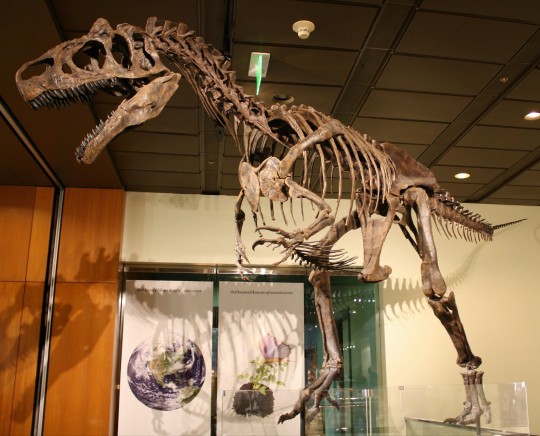
on the left is the skeleton of patagonykus. on the right is the skeleton of allosaurus. take a close look at their feet.


notice how the foot bone (called a metatarsal) in the middle form a triangle in patagonykus? that's because alvarezsauroids are adapted to be very energy efficient for moving over long distances! think of it like a good, laced up running shoe -- you're going to lose less energy through your foot sliding around in your shoe if it's nice and tight, and you'll be able to run for longer without getting tired. the metatarsals have locked together so that alvarezsauroids can travel a long ways without spending as much energy as animals without this adaptation. so they didn't need to eat as much in the first place due to lower energy spend, and they were also able to go a good distance to continue their constant bug buffet.
and now, to conclude, i will show you one of the absolute cutest fossils ever found.

this is a fossil of jaculinykus. while it may just look like a pile of bones, upon closer inspection (and if you know what to look for) you might notice that it looks rather compact, almost like it was curled up.


well, in fact, this lil guy was curled up and cozy. with its lil tail wrapped around it. and it's been sleeping like that for tens of millions of years until we found it and brought it back to life through art. post over i have to go cry about this now
#DISCLAIMER i am not a paleontologist i'm just a guy who really likes paleontology. PLEASE don't be afraid to correct me on anything here#paleoblr#no id#paleontology#cedar speaks#eflatminorseven#asks#alvarezsaurs#alvarezsaurids#alvarezsauroids
42 notes
·
View notes
Text

A watercolour drawing of Albertonykus
#art#my art#traditional art#watercolour#paleoart#paleontology#palaeoblr#archosaurs#dinosaurs#theropods#coelurosaurs#maniraptorans#alvarezsaurs#albertonykus#queue
30 notes
·
View notes
Text
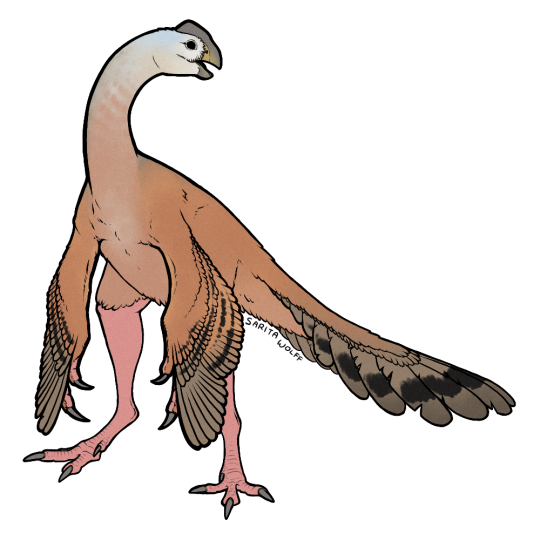
More basal than some of the later Late Cretaceous oviraptorosaurs, Wulatelong gobiensis was a small, long-legged oviraptorid native to Northern China. While small, it was considerably larger than most basal oviraptorids. Like other oviraptorosaurs, its toothless, parrot-like beak was likely an adaptation for a diet of tough desert plants. Living in an arid environment where you don’t know when your next meal will come along may have also led to an opportunistically omnivorous diet. This “dragon of Wulate” is known from a nearly complete skeleton, however, its remains were scattered, eroded, and damaged by insects before being fossilized, so not much else is known about it.
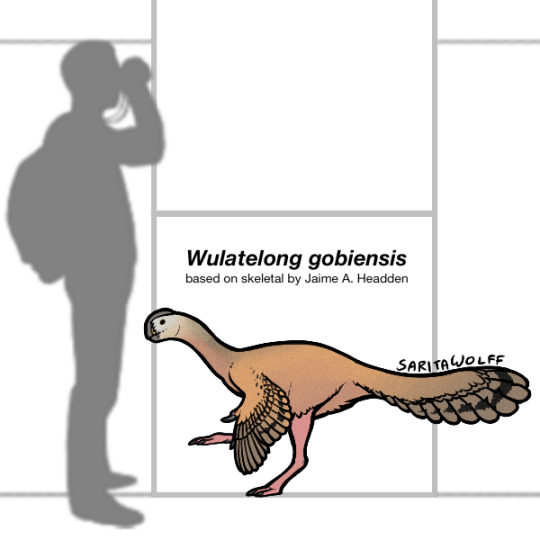

The Bayan Mandahu Formation of Late Cretaceous Northern China was semi-arid, and many fossils were preserved by sudden wind-blown sandstorms. It was similar to the nearby Djadochta Formation, and shared many of the same types of animal. Short-lived streams, oases, and arroyos would have attracted much of the life here. Wulatelong would have lived alongside (and possibly been hunted by) the similarly-sized dromaeosaur Linheraptor. It would have also shared this harsh environment with the alvarezsaur Linhenykus, troodontids Linhevenator and Philovenator, and crocodylomorphs like Shamosuchus, as well as small birds, lizards, and mammals.
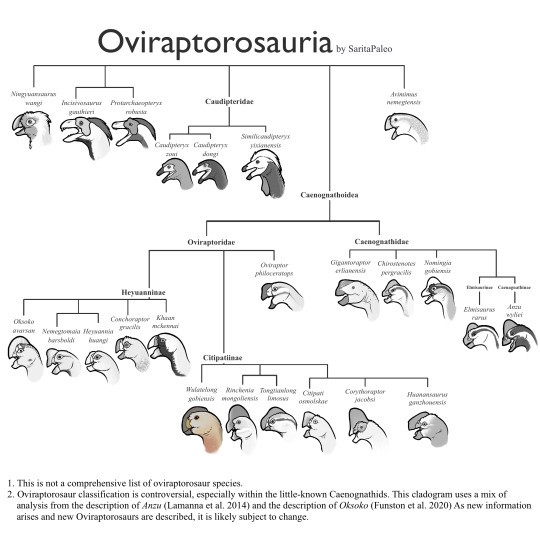
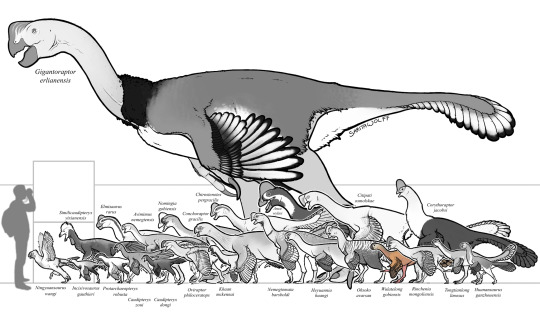
This art may be used for educational purposes, with credit, but please contact me first for permission before using my art. I would like to know where and how it is being used. If you don’t have something to add that was not already addressed in this caption, please do not repost this art. Thank you!
#Sorry for the lack of paleoart recently#I’ve been very busy running the “Best Animal Tournament”#and also got surgery in both wrists so that had me unable to draw for a while#Now that I’m slowly starting to draw again I’m picking up where I left off with my oviraptorosaur series!#Wulatelong gobiensis#Wulatelong#oviraptorid#oviraptorosaurs#theropods#saurischians#archosaurs#archosauromorphs#reptiles#SaritaDrawsPaleo#Bayan Mandahu Formation#Late Cretaceous#China
35 notes
·
View notes
Text

I love this thing but man I’m scratching my head over what it could be. This is kinda a repeat of my troubles with Tobi Kadachi.
Part of me wants to say freak ass Alvarezsaur. Or maybe offshoot of the lineage I’ve purposed involving monsters leading up to the flying/bird wyvern split which includes maccao, the new world raptors, and seikret.
56 notes
·
View notes
Text
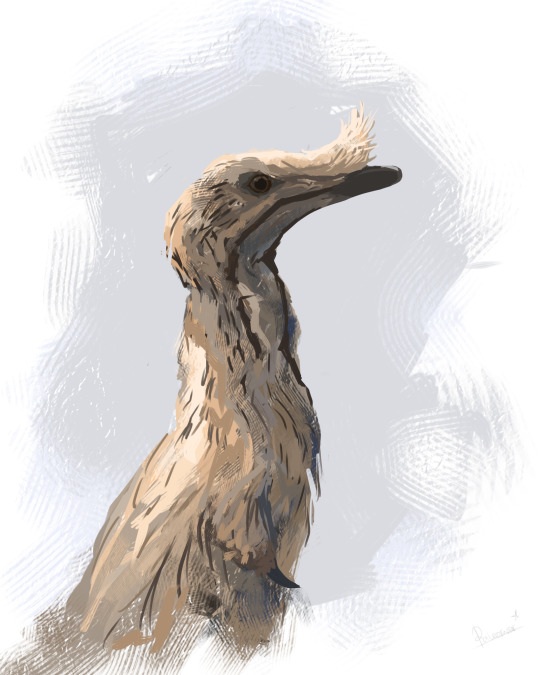
Been slacking on art so have this Jaculinykus yaruui, an Alvarezsaur from the Barun Goyot FM
100 notes
·
View notes
Text


This realization that I just had is hella bewildering beyond all reasoning, but after I came up with it, I really needed to let it all out.
Capcom somehow decided to make alvarezsaurs CURSED after seeing the desert episode of Prehistoric Planet
#ultra ramblings#prehistoric planet#monster hunter#monster hunter wilds#rompopolo#mononykus#I think we have a new winner for that make a better fake theropod thing Tubmlr came up with a decade ago#suck it Indominus
4 notes
·
View notes
Text
Restudy of shoulder motion in the theropod dinosaur Mononykus olecranus (Alvarezsauridae)
Published 5th December 2023
Investigation of the range of motion at the shoulder in Mononykus olecranus is conducted by measuring the angle of the humerous. Results show that Mononykus olecranus was able to tuck its arms in at the sides allowing them to sprawl to orient the palm downward ,enabling a hook-and-pull digging at surfaces to forage for insects.

Experimental setup and Range of humeral motion in Mononykus olecranus
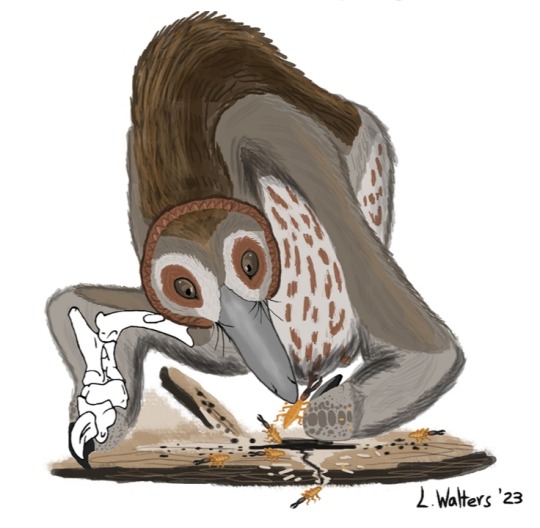
Life reconstruction of Mononykus olecranus foraging for termites in some wood, artwork by Leandra Walters
Source:
12 notes
·
View notes
Text
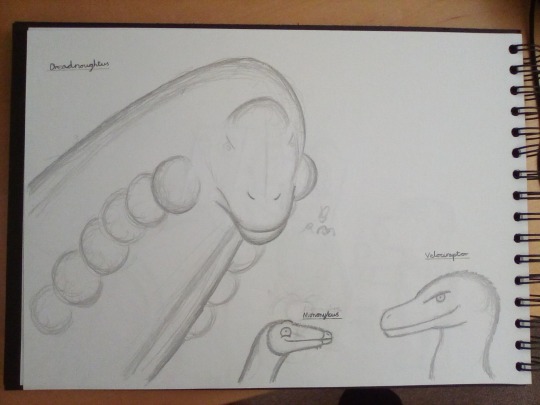
Prehistoric planet fanart. Just realised they're all from episode two.


#prehistoric planet#fanart#dinosaur#dreadnoughtus#mononykus#velociraptor#enantiornithes#sauropod#alvarezsaur#dromaeosaur#maniraptora
9 notes
·
View notes
Note
Trick or treat :3
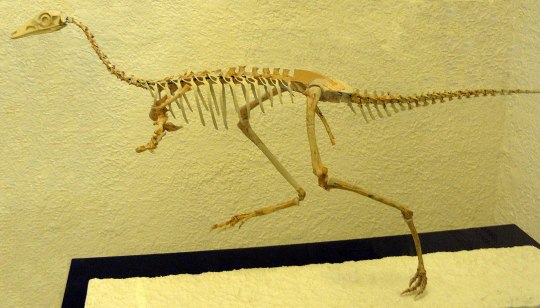
Mononykus!
Please do not send me more trick or treat asks, I am only answering the ones I could not get to after I hit post limit last night, it is Nov 1st we have other shenanigans to attend to!
23 notes
·
View notes
Text
Notably, the preserved posture of the specimen exhibits a stereotypical avian-like sleeping position seen in the troodontids Mei and Sinornithoides. Evidence of this behavior in the alvarezsaur Jaculinykus suggests that stereotypically avian sleeping postures are a maniraptoran synapomorphy, providing more evidence of bird-like traits being distributed broadly among avian ancestors.
1 note
·
View note
Text

Another (old) #paleostream sketch
Albertonykus, here portrayed as extra floofy. The plumage is thick enough to cover up the tiny arms it had.
655 notes
·
View notes